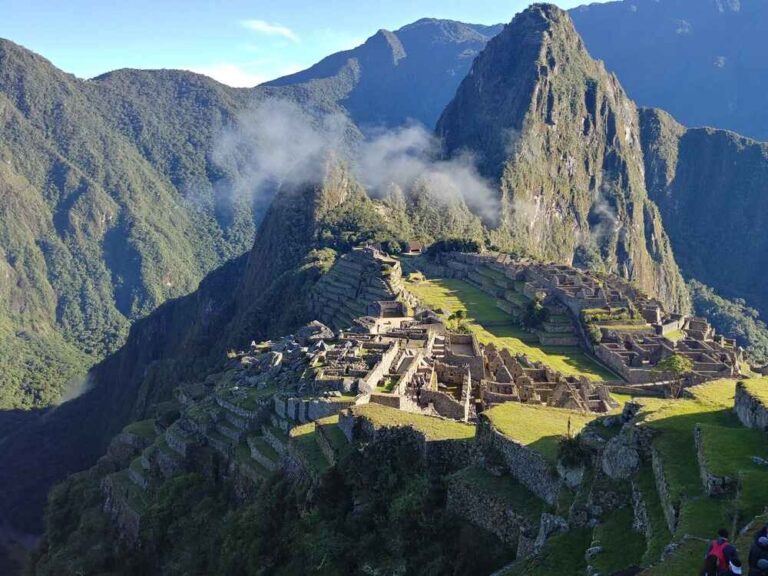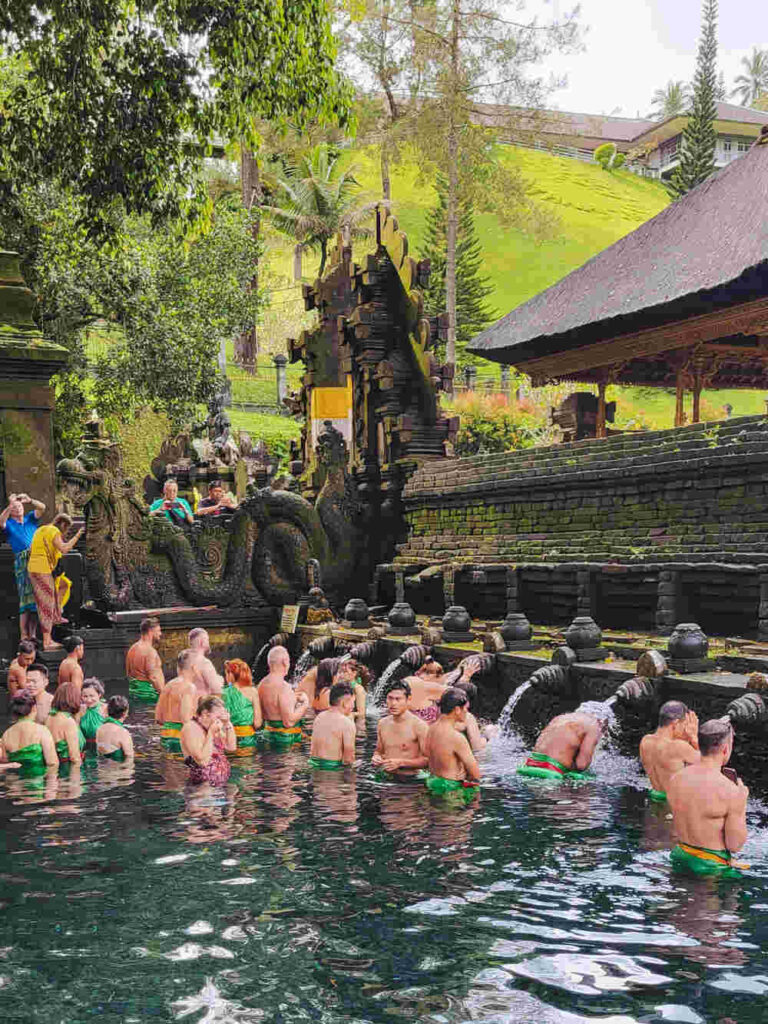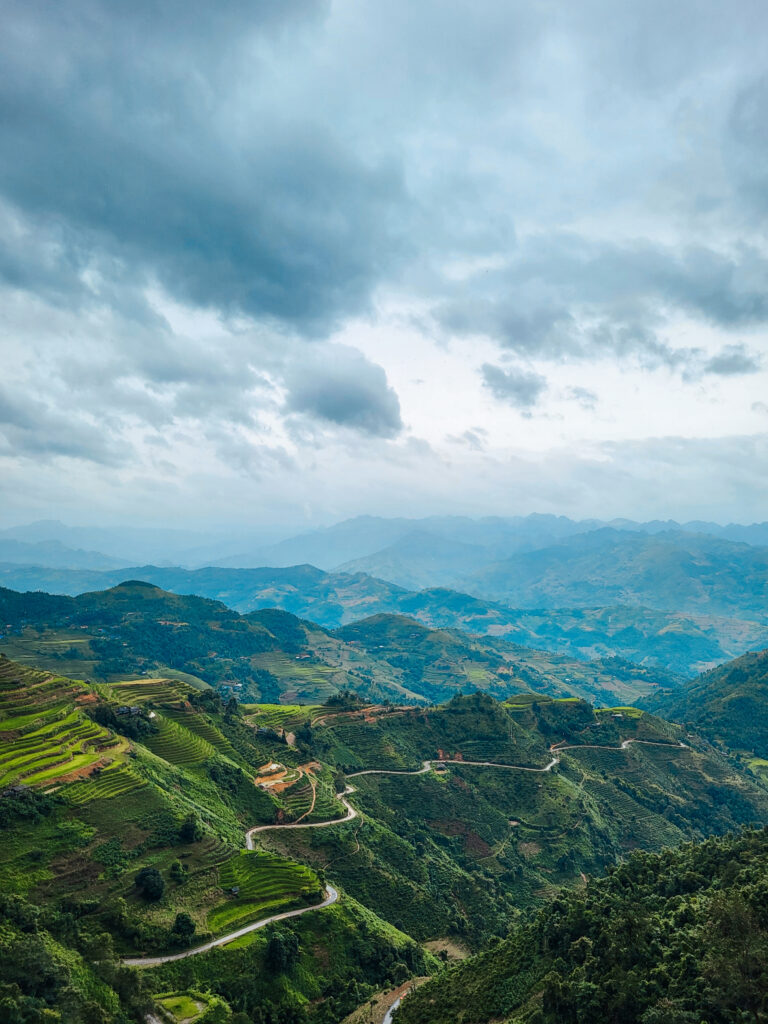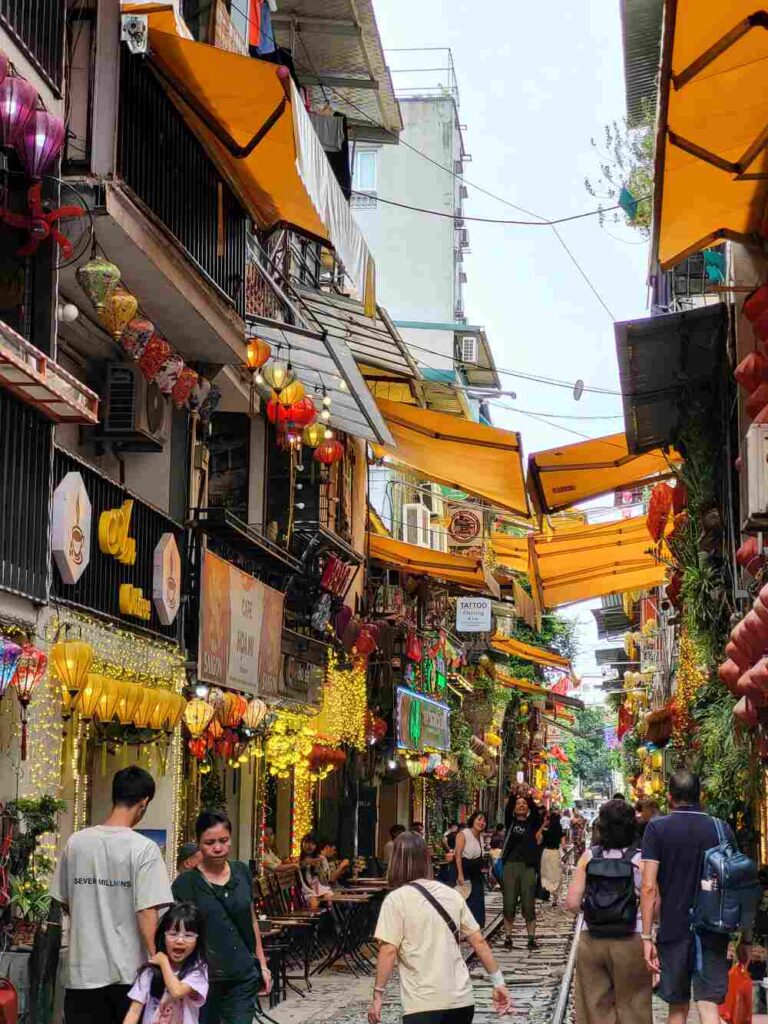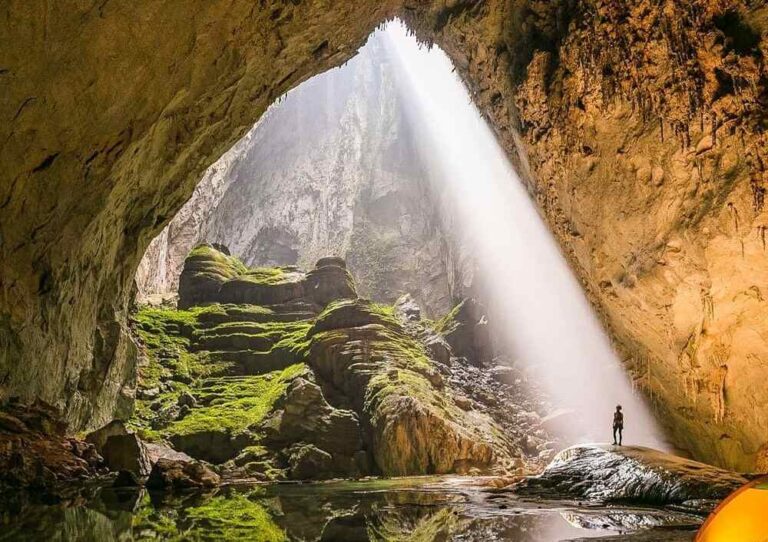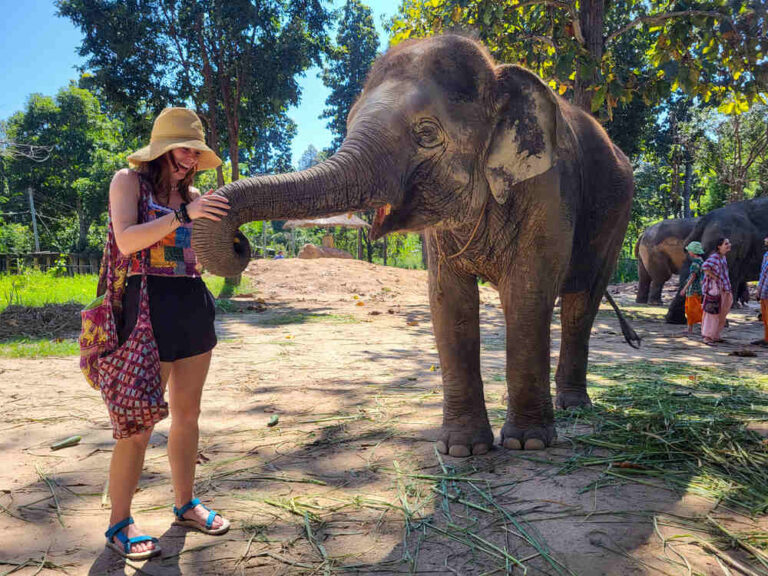This is the story of how I fell in love with bikepacking: a 200km ride through southern Ontario
In the summer of 2024, I went on a 200km bikepacking trip with my dad and I completely fell in love with it. It was the perfect mix of challenge, nature, and quality time.

This post is all about that first trip and how it all started: the gear, the route, the mishaps, and why I think bikepacking is one of the coolest ways to explore Canada.
What is bikepacking anyway?
If you’re new to the term, you’re not alone. Bikepacking is the combination of long-distance cycling and backpacking. It’s a mix of adventure travel, minimalism, and good old-fashioned endurance.
Instead of hiking from campsite to campsite, you carry your gear on your bike, usually in a mix of frame bags, panniers, and whatever else you can strap on and head off for multi-day adventures. Think of it as camping with wheels.
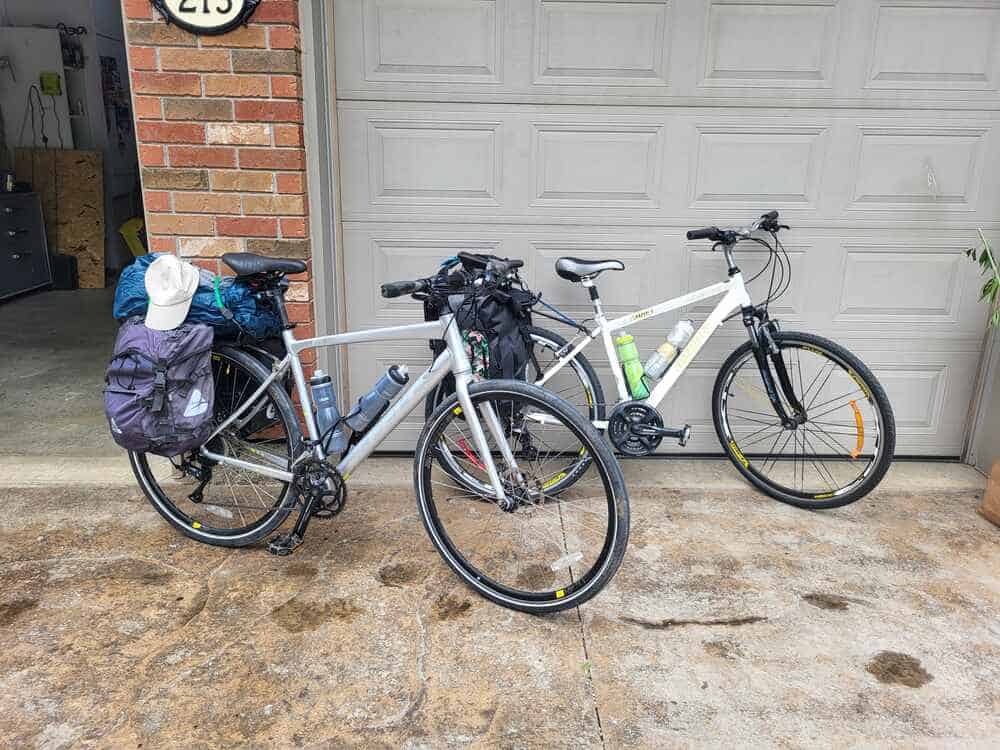
I’ve always loved being outside. I grew up camping, hiking, backpacking and spending weekends exploring trails. Cycling, on the other hand, was more of a casual thing. I did short rides to get out of the city or along a trail. Then I got into longer rides. It started with weekend spins that stretched further and further, until one day I was planning out 100km rides just for fun.
Enter: my dad.
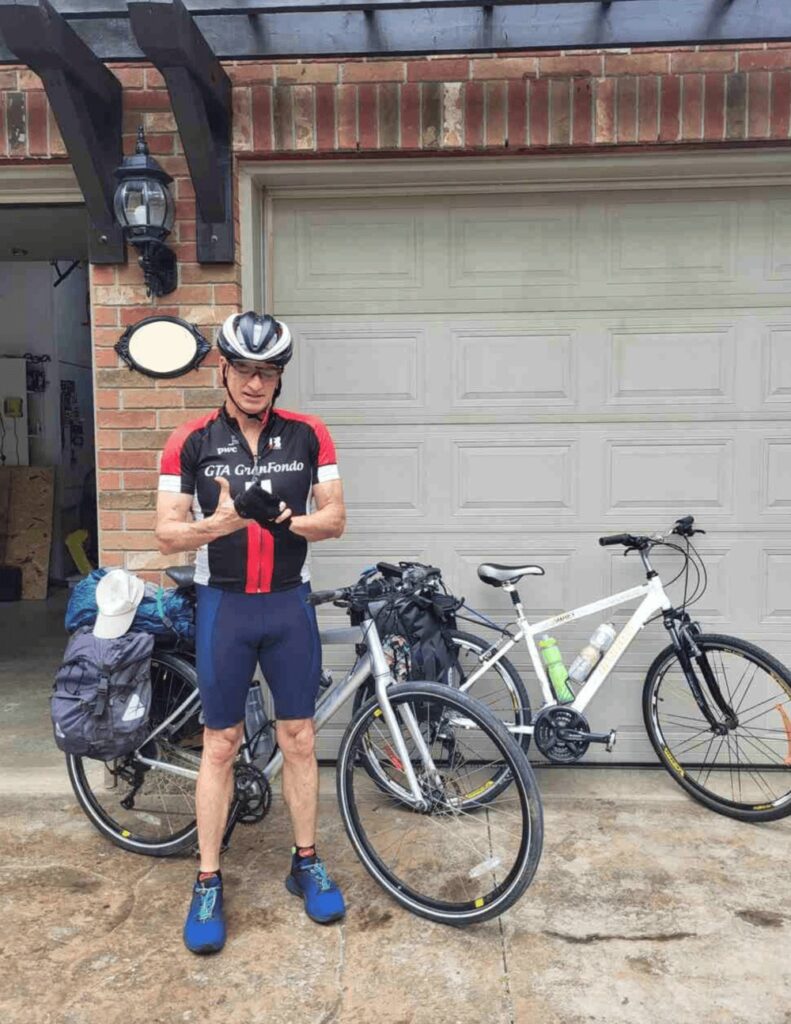
The bikepacking spark
My dad has been cycling forever. He’s competed in endurance races, been part of cycling teams, and spent more time in a saddle than on a couch. So naturally, when I started upping my cycling game, he was my go-to source for advice and motivation.
Near the end of that summer, he floated an idea: Why not combine camping and cycling? He’d brought it up before, but this time it stuck. He’d done one or two trips before hand and was determined to take me on the next trip.
With the cooler weather approaching and a free weekend, I figured, why not? Let’s give it a shot.
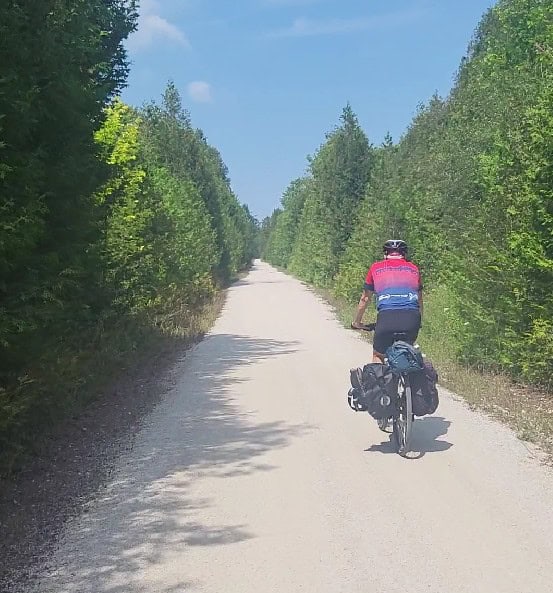
We spent about a week planning the route, testing how to pack our bikes, and figuring out what gear we’d need. We borrowed bags, used garbage bags and bungee cords to hold things together, and zip-tied anything that rattled. I made my dad commit to lightweight camping gear. Between my camping experience and his bike knowledge, we figured things out.
The route: Fergus to Lion’s Head
We decided on a 3-day route starting from Fergus, a small town just outside the Greater Toronto Area, and heading up to Lion’s Head Provincial Park on the Bruce Peninsula. It was roughly 200km in total on mostly flat ground, split into three days of riding.
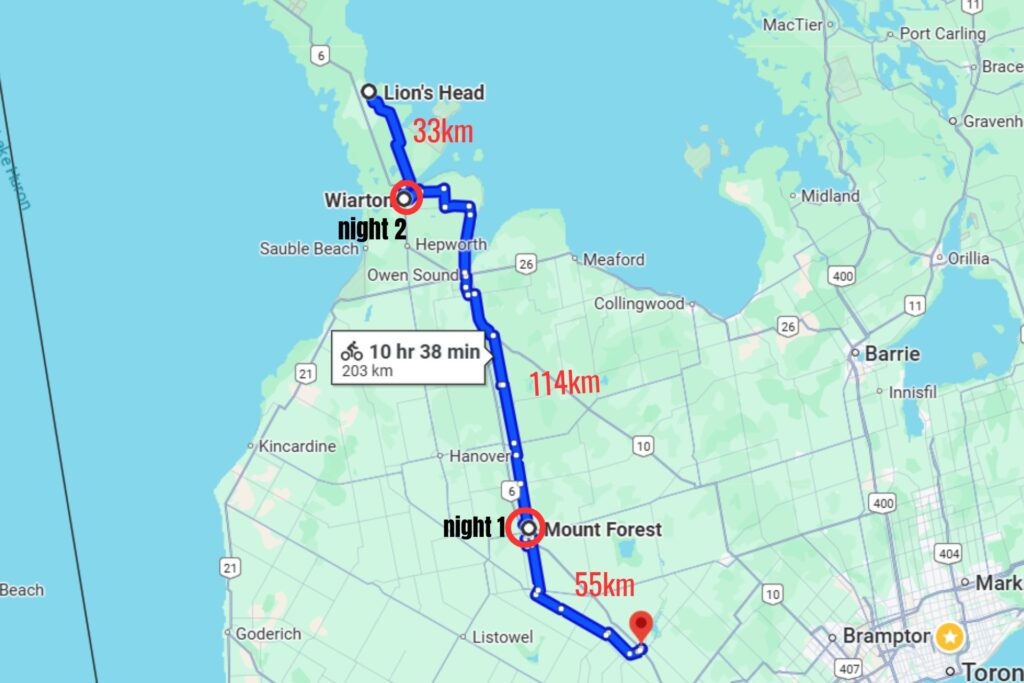
Day 1
Fergus to Mount Forest
Distance: 55km
We would leave after work for the afternoon warm-up and easy camping
Day 2
Mount Forest to Wiarton
Distance: 114km
The long-distance day
Day 3
Wiarton to Lions Head
Distance: 33km
An easy morning after, and meet up with the rest of the family for lunch
Our goal was to stick to trails and quieter country roads whenever possible. We’re both used to road biking with lightweight bikes, smooth pavement, and dodging traffic. So trading that in for gravel paths and packed gear was a fun challenge.
The route took us through farmland, hills, and cute rural towns. It was a great mix of peaceful rides and road sire cows!
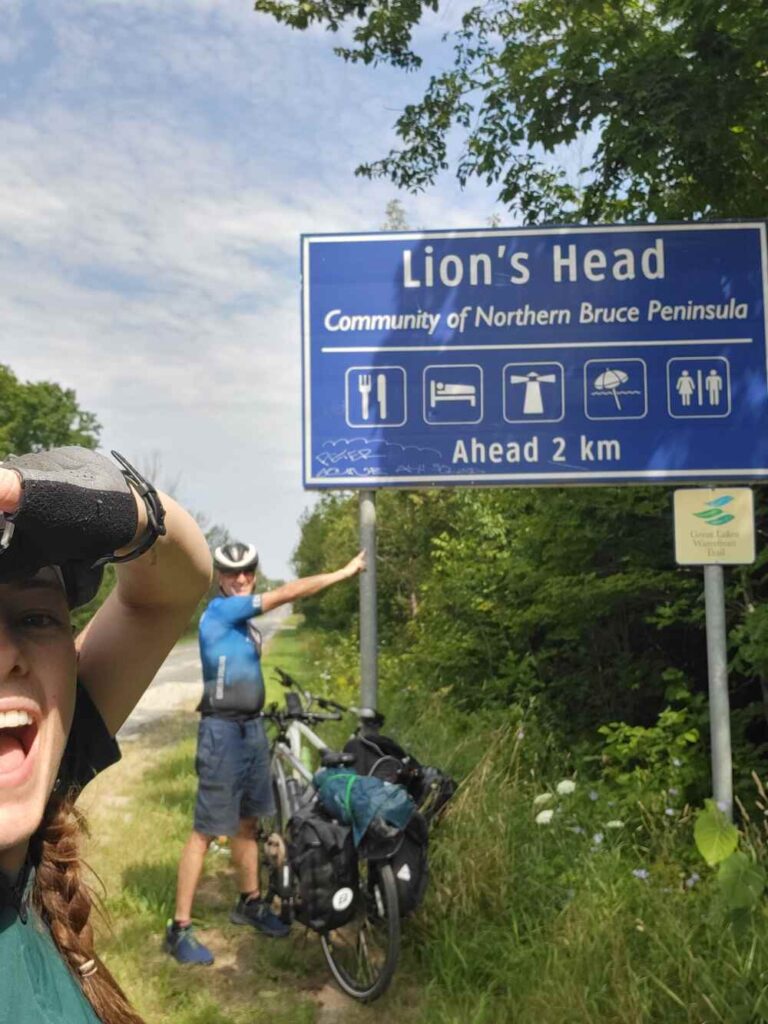
Our overnight stops: Hipcamp to the rescue
My dad’s previous multi-day rides usually involved hotel stays in nearby towns. But this time, we wanted to keep it outdoors.
Hipcamp is an app that’s basically Airbnb for camping. People rent out parts of their land for tents, RVs, and campers. It’s an absolute game-changer. Instead of having to reach a big town at the end of the day, we could camp on private land right off our route. We found quiet spots tucked away from the roads.
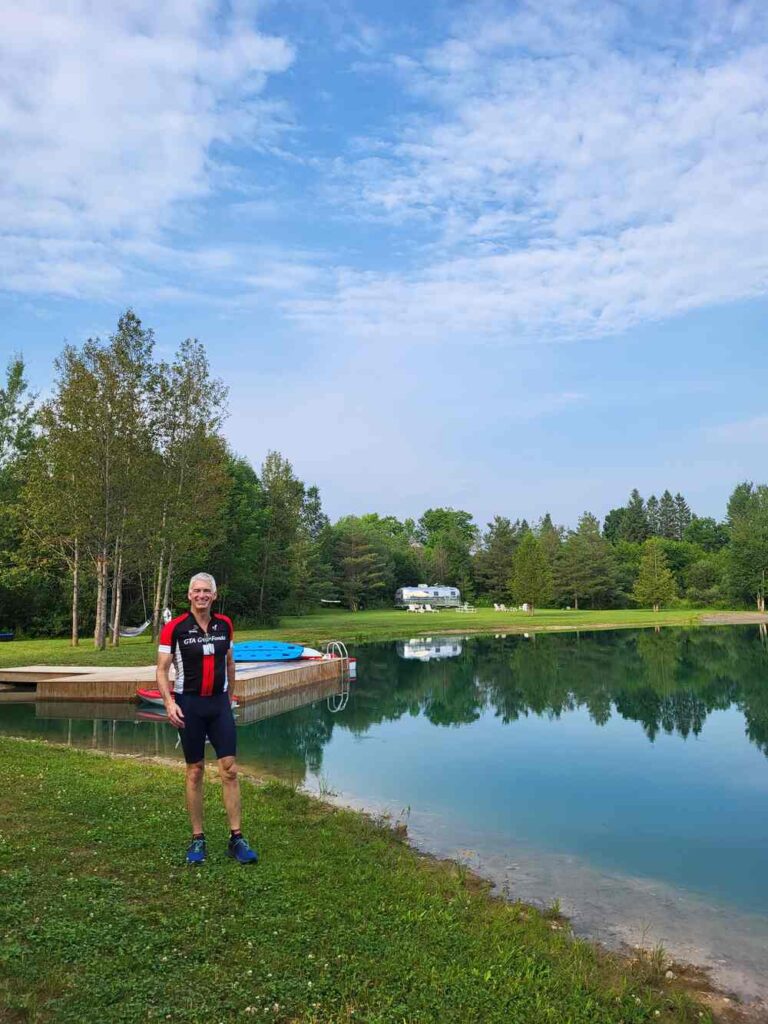
The gear: what we brought
We’re far from having the perfect setup, but we made it work with what we had. Our setups were a mix of borrowed gear, hiking equipment, and some very creative packing solutions. Here’s what we carried between us:
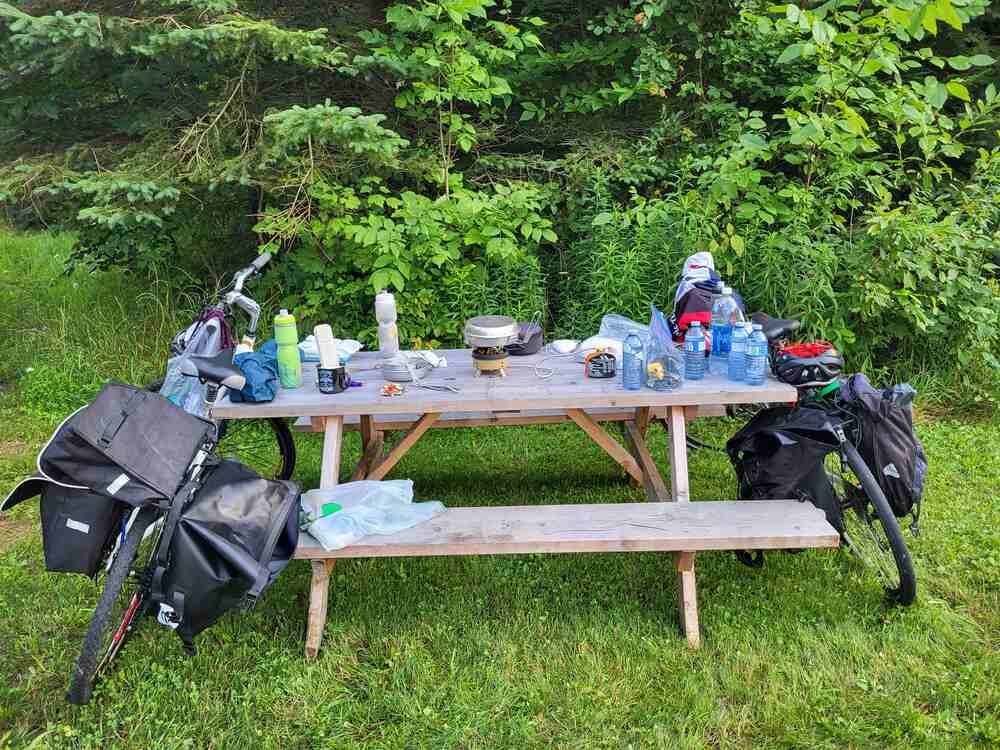
Camping & Personal Gear:
- Tent
- Sleeping bags + mats
- Lightweight stove + fuel
- Food & snacks
- Bug spray & sunscreen
- Quick-dry towel
- Headlamp & flashlight
- Kindles
- Wet wipes (lifesaver)
- First aid kit
- Identification + stay confirmations
- Sandals & clothes for camp
- Utensils
Cycling Gear:
- Helmets
- Cycling gloves
- Water bottles
- Garmin GPS
- Extra tire tubes & pump
- Multi-tool & bike repair kit
- Zip ties (lifesavers!)
- Power gels & ride snacks
- Phones + portable chargers
We definitely overpacked in some areas and underpacked in others. But hey, that’s how you learn.
The hiccups (because there are always hiccups)
Of course, not everything went perfectly. About halfway through day two, one of the cages on my bike frame came loose. A screw popped out, and suddenly my bags were flapping around and threatening to fall off completely.
Luckily, we had a stash of zip ties (which should be in every bikepacking kit), and we managed to rig it all back together in true backcountry-mechanic fashion.
It was moments like this that made the trip so memorable. We problem-solved, laughed, and just enjoyed being out there together, combining our favorite hobbies in the best way possible.
Key takeaways
There’s a lot that can go wrong on any kind of trip, but as a type 2 fun kind of person, these are the things I love. So here are the takeaways from this first trip that I am bringing with me from now on:
- Pack light: Every extra item feels heavier by the hour, especially on climbs.
- Plan your route: Spontaneity is great, but not when you’re tired, lost, and running low on water. Use mapping tools and apps to plan distances, elevation, and resupply points, and download offline maps just in case.
- Bring zip ties. Seriously, don’t leave home without them. These little things are lifesavers. From broken cages to flapping gear, zip ties can fix a dozen problems mid-ride. Add duct tape and a multi-tool to that list, too.
- Test your gear before you go: Make sure your bags are secure, your stove works, and your sleeping pad holds air. Don’t discover issues 80km from the nearest town.
- Fuel your body: Long rides with weight are no joke. Bring plenty of snacks, electrolyte mixes, and easy-to-make meals. Eat before you’re hungry and drink before you’re thirsty.
- Embrace the mess: Things will go wrong. You’ll get dirty, things will break, and plans might shift. That’s all part of the fun. Flexibility and a good sense of humor go a long way.
Why bikepacking is a good way to travel
Bikepacking is one of the most immersive ways to travel. It’s slow enough to take in your surroundings, but fast enough to cover real distance. You can explore places cars can’t reach, and you don’t have to worry about parking or traffic.
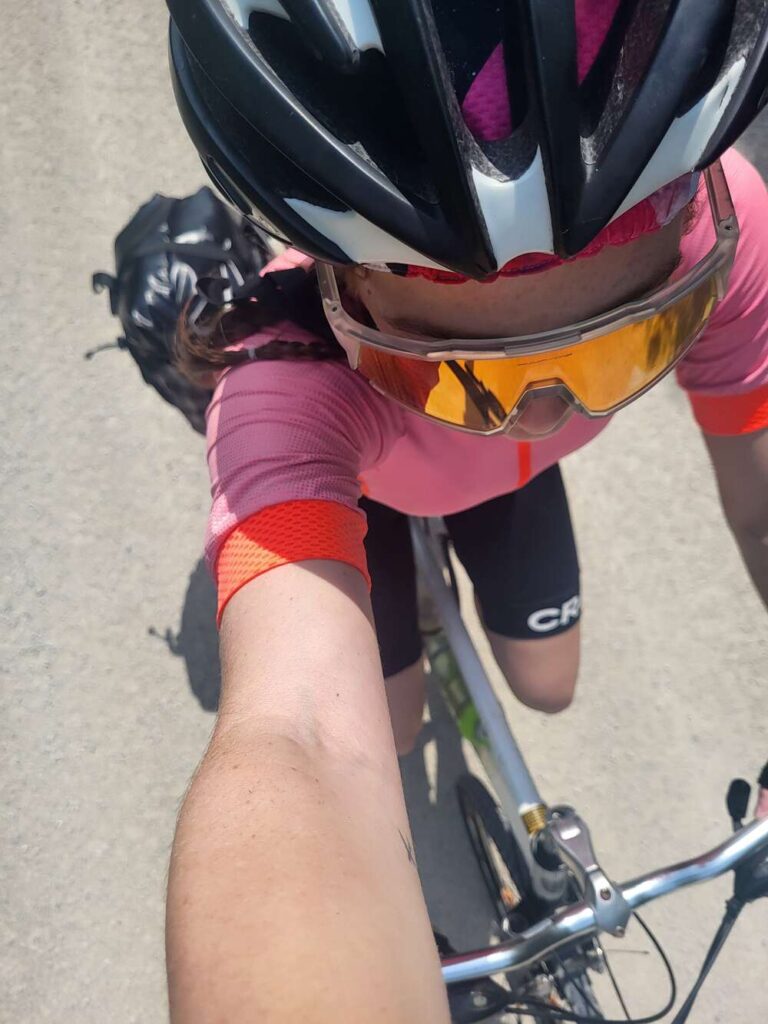
For me, it blends the best parts of camping and biking with the mix of slow travel, physical challenge, and adventure into one ridiculously satisfying experience. For anyone in Canada, especially in Ontario, it’s an incredible way to explore your own backyard.
What’s next?
This trip sparked something big. My dad and I already have our eyes on future routes for next time. Ontario is full of great bike loops, some that pass through cute towns, others that cut into the wilderness. Northern Ontario, with its many provincial parks and gravel roads, is especially tempting.
We’ve been using bikepackingOntario and bikepackingCanada to scout new routes around Ontario. Canada has endless bikepacking potential, and we’re just getting started.

